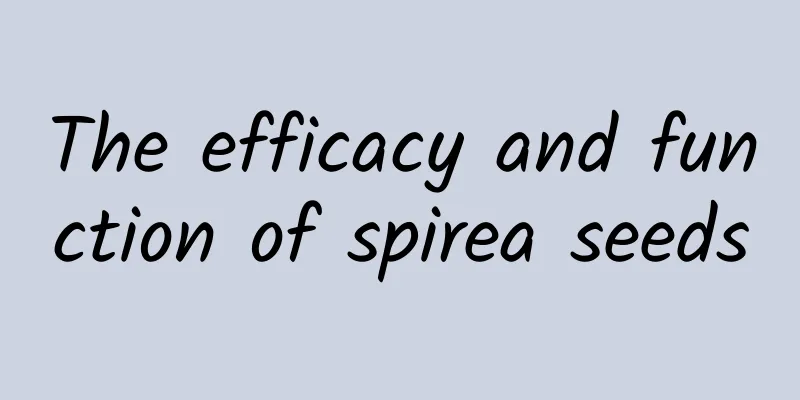The efficacy and function of red stem grass

|
Red stem grass is a traditional Chinese medicinal material. There are precedents of using red stem grass to treat diseases in ancient times, so we can eat it with confidence. Next, I will mainly introduce to you the effects of red stem grass. [Other names] Ze Lan, red stalk grass, red cohosh, yellow flower, comfrey, big Ze Lan 【Source】 Medicinal material source: the whole herb of Eupatorium heterophyllum of the Asteraceae family. [Original morphology] Eupatorium heterophyllum is a perennial herb, 1-2m tall. The stem is erect, cylindrical, covered with long hairs, with scattered fine red spots on the upper part and light brown or purple at the base. Leaves opposite, sometimes upper leaves alternate; leaf blade 3-lobed, rarely shallowly lobed or half-lobed, but leaves under inflorescence unlobed, lobes oblong, elliptic-lanceolate or lanceolate, pubescent and glandular on both sides, but hairs on the upper side are few and sparsely green, while hairs on the lower side are dense and pale white, with coarse serrations on the margins and short petioles; middle lobe is larger, 4-9cm long and 1.5-3.5cm wide, lateral lobes are shorter, petioles are shorter, about 1cm long; leaves under inflorescence are smaller, unlobed, ovate or lanceolate, sessile or with short petioles. The inflorescence head is arranged in umbels or compound umbels at the top of the stem or branches; the tips of the bracts are rounded and obtuse. Achenes with glandular dots; pappus as long as corolla. The flowering period is from July to September, and the fruiting period is from September to October. [Habitat distribution] Ecological environment: grows on the edge or under shrub forests on hillsides, and in grass on hillsides. [Properties] Identification of properties: The stem is cylindrical, 2-7mm in diameter, the lower part is woody, gray-brown, the upper tender stem is gray-light green, covered with short white hairs; it is brittle and easy to break. The leaves are mostly wrinkled and broken. When completely flattened, they are oval or lanceolate, with rounded serrations on the edges, dark green or gray-green, and yellow glandular dots and short white hairs on both sides. Slight odor, slightly bitter taste. 【Nature and flavor】 Sweet; bitter; slightly warm 【Entry】 Enters the liver and kidney meridians 【Functions and indications】Promote blood circulation and regulate menstruation; remove blood stasis and relieve pain; remove dampness and promote diuresis. Mainly used for irregular menstruation, amenorrhea, abdominal masses, abdominal pain, postpartum lochia retention, dribbling urination, edema, traumatic injury, and fracture 【Usage and Dosage】 Oral administration, 9-15g. For external use: take appropriate amount and mash it for application. 【Excerpt】 Chinese Materia Medica The above is an introduction to the Chinese medicinal herb red stem grass. For medicinal herbs that we don't understand, we should learn more about them so that we can make full use of them in our lives and not be at a loss. |
<<: The efficacy and function of willow leaf blood flying
>>: The efficacy and function of red stem grass root
Recommend
What are the side effects of saffron?
Drinking saffron tea is one of the most popular t...
What are the effects and functions of Liu Jinu?
Liu Jinu is a kind of traditional Chinese medicin...
The efficacy and function of red root
Red seed root is one of the common traditional Ch...
It is a "cheap eye-protecting vegetable". The more you eat it, the brighter your eyes will be! It can also supplement calcium and resist aging. It is now on the market!
Recently, amaranth is in season. As the old sayin...
The efficacy and function of Eupatorium microtrichum
Eurya biloba is a traditional Chinese medicinal m...
The maple leaves this year are not red enough, but these "coast guards" are really red...
Mangroves are woody plant communities that grow i...
The efficacy and function of tea oil
Many people choose tea oil because of its high-va...
When walking, your legs suddenly become weak. What is wrong with your knees? This article will teach you how to distinguish
Knee pain, usually no problem The part that can k...
The efficacy and function of whole leaf blue orchid
As the pressure of modern life increases, more an...
Symptoms of Asarum poisoning
Asarum is a traditional Chinese medicinal materia...
The efficacy and function of Peganum harmala
As a very common Chinese medicinal material in da...
Can the Webb telescope find extraterrestrial life soon? Scientists are confident
Scientists believe that although no extraterrestr...
The efficacy and function of iron essence
The traditional Chinese medicine iron essence is ...









